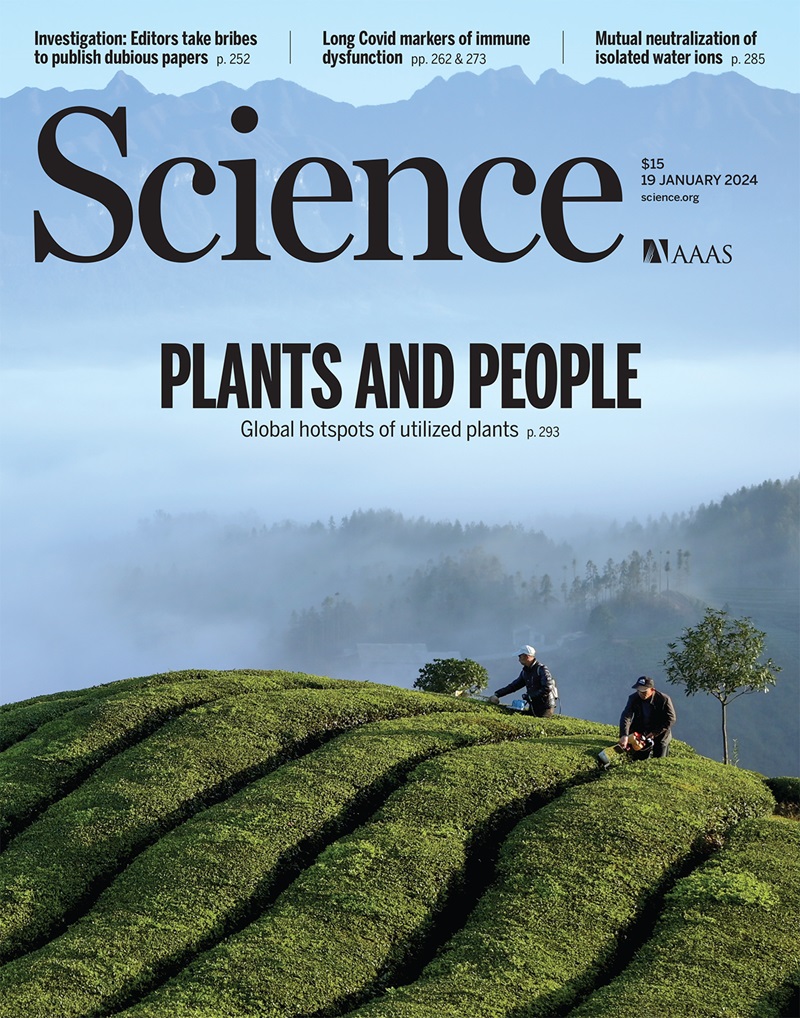银河系内星际尘埃消光曲线的三维地图
IF 45.8
1区 综合性期刊
Q1 MULTIDISCIPLINARY SCIENCES
Science
Pub Date : 2025-03-13
引用次数: 0
摘要
星际尘埃颗粒导致背景天文光源的光消光(吸收和散射)。消光曲线的光谱形状取决于尘埃的组成。我们用低分辨率光谱测量了1.3亿颗恒星的消光曲线。通过反转这些数据,我们绘制了银河系内三维和麦哲伦星云内二维的消光曲线参数R(V)。这些地图为天文观测提供了更好的消光校正。我们发现R(V)随消光而变化,与低消光区尘埃颗粒的吸积生长和高消光区尘埃颗粒的凝聚生长相一致。恒星形成区域的R(V)值较高,表明在这些区域小尘埃颗粒优先被破坏或额外提供大尘埃颗粒。本文章由计算机程序翻译,如有差异,请以英文原文为准。
Three-dimensional maps of the interstellar dust extinction curve within the Milky Way galaxy
Interstellar dust grains cause extinction (absorption and scattering) of light from background astronomical sources. The spectral shape of the extinction curve depends on the dust composition. We used low-resolution optical spectra to measure the extinction curve of 130 million stars. By inverting these data, we mapped the extinction curve parameter R(V) within the Milky Way in three dimensions and within the Magellanic Clouds in two dimensions. These maps provide improved extinction corrections for astronomical observations. We find that R(V) varies with extinction, consistent with dust grains growing by accretion in low-extinction regions and by coagulation in higher-extinction regions. Star-forming regions have high R(V) values, indicating either preferential destruction of small dust grains or additional supply of large dust grains in those regions.
求助全文
通过发布文献求助,成功后即可免费获取论文全文。
去求助
来源期刊

Science
综合性期刊-综合性期刊
CiteScore
61.10
自引率
0.90%
发文量
0
审稿时长
2.1 months
期刊介绍:
Science is a leading outlet for scientific news, commentary, and cutting-edge research. Through its print and online incarnations, Science reaches an estimated worldwide readership of more than one million. Science’s authorship is global too, and its articles consistently rank among the world's most cited research.
Science serves as a forum for discussion of important issues related to the advancement of science by publishing material on which a consensus has been reached as well as including the presentation of minority or conflicting points of view. Accordingly, all articles published in Science—including editorials, news and comment, and book reviews—are signed and reflect the individual views of the authors and not official points of view adopted by AAAS or the institutions with which the authors are affiliated.
Science seeks to publish those papers that are most influential in their fields or across fields and that will significantly advance scientific understanding. Selected papers should present novel and broadly important data, syntheses, or concepts. They should merit recognition by the wider scientific community and general public provided by publication in Science, beyond that provided by specialty journals. Science welcomes submissions from all fields of science and from any source. The editors are committed to the prompt evaluation and publication of submitted papers while upholding high standards that support reproducibility of published research. Science is published weekly; selected papers are published online ahead of print.
 求助内容:
求助内容: 应助结果提醒方式:
应助结果提醒方式:


